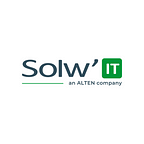IoT Hacks #1: Energy harvesting & embedded system
This is the first article in the “IoT Hacks” series, which will focus on presenting the latest embedded solutions for IoT for various industries. We will show you how to easily revolutionize your existing IoT solutions. Get ready, and maybe we’ll help you find inspiration for your specific industry.
Energy harvesting — sources of obtaining energy
Today we want to talk about “energy harvesting”. Or speaking precisely about obtaining electricity from other sources when your device has limitations. “Energy harvesting” (also known as energy scavenging) constitutes a variety of methods that allow us to process energy from our environment.
Energy can be obtained from:
Each of these ways of obtaining energy has its advantages and disadvantages, therefore, keep in mind that not all solutions will work perfectly in every single case.
1. Solar Energy
Solar energy is one of the best and most efficient energy sources for powering IoT devices. The table below clearly shows that solar panels generate the most energy per cm².
This solution will work perfectly for systems placed outside the building, as that is where they will have the best efficiency. As you can probably guess, obtaining energy from indoor systems is much less effective and requires them to be placed near windows or near lamps.
2. Energy from a temperature difference
To increase the efficiency of solar panels, it is worth considering the use of “thermoelectric energy harvesting”, which is based on TEG (Thermoelectric generators).
In simple terms, the TEG technology works in such a way that a cell heated on the one hand and cooled on the other produces an electric current. The bigger the temperature difference between the cell covers, the greater the voltage and current that such a cell can generate.
As you can see, any temperature difference between the surroundings and an object that is cold or warm allows for ecological energy generation.
3. Radio waves for energy production
Another interesting solution worth using is radiofrequency energy harvesting. This method of alternative energy acquisition will come in handy in office spaces where we have a lot of equipment using WIFI and GSM. This allows us to harvest energy at a high and continuous level. Antennas which have been specially designed and integrated into an IoT device, collect energy from the radio waves, and help power the system.
4. Vibration powered
The last, but not least, method of modern energy generation are vibrations — vibration energy harvesting. Here the energy can be generated by piezoelectric crystals (a principle of operation similar to an automatic lighter) or other elements generating an electromagnetic field. This kind of solution can already be found in watches, shoes (elements placed in the soles) or children’s scooters.
Summary
In the article, we present methods of harvesting energy (obtaining energy from the environment) that can support the power supply systems of devices equipped with IoT. This especially applies to devices that have until now been powered by batteries. Sometimes even the battery power can be completely replaced with another, less obvious method.
If you would like to check if it is possible to extend the working time of your IoT device, or you’re looking for a technological partner to create a dedicated IoT solution — drop us a line and schedule a free consultation!
